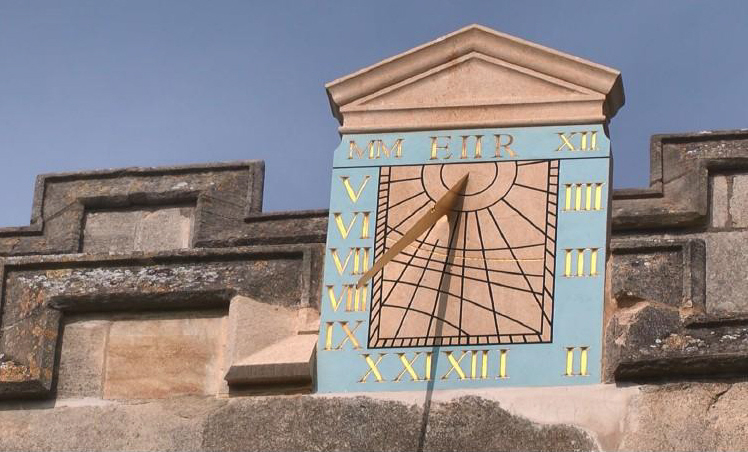

All Saints’ Sundial
No one knows when a person first used the direction or length of a shadow to tell the time — probably many millennia ago. Although not strictly a sundial, the use of stone arrangements to mark a particular event or date was well established by the fourth millennium. The spectacular Maeshowe chambered tomb on Orkney – dating from 3,000 BC — is aligned so that the rear wall of its chamber is illuminated by the sun only on the winter solstice.
The first sundial broadly resembling a modern one was made by the Babylonians in about 750BC. In 270BC their sundial technology was shared with the Greeks, and from there it passed to the Romans. There is a fine example of a Roman sundial in the British Museum (illustrated above). From the fall of the Roman Empire until the European Renaissance, the centre of sundial expertise moved to the Arab world.
Early sundials were based on the assigning of 12 hours between dawn and dusk, so the hours of a day in winter were shorter than the hours of a summer day – so-called ‘unequal hours’. The Moroccan mathematician and astronomer Abu Ali al-Hasan (1281 AD) is generally credited with moving timekeeping onto the modern basis of ‘equal hours’.
Mechanical clocks, developed in the fourteenth century, use equal hours. The earliest surviving one is in Salisbury Cathedral and dates from 1386. The arrival of the clock increased the demand for sundials because a sundial provided the only accurate way of resetting a stopped clock — before the advent of the BBC time pips,
There is evidence that there was a sundial on the southern parapet of the church at least by 1727 as it is visible in the drawing of the church in Francis Peck’s book of that date, “Antiquarian Annals of Stanford” (sic).
In recent times most people of Stamford were unaware of its existence because it no longer stood out from its castellated surrounding and its details apart from its rusted gnomen were scarcely legible having been eroded away over the centuries. Perhaps more seriously the sundial was in a parlous state of repair. A vertical crack ran through the main panel, crude cement mortar patches were evident in many places and there was a danger that pieces of stone could fall, especially from the corners of the pediment.
In 2011 the Stamford Civic Society determined that the situation need to be resolved and, it having been established that, in view of its fragile and fractured state, the sundial could not be repaired and properly conserved in situ, a new sundial should be installed.
Approvals had to be sought from the Parochial Church Council, the Lincoln Diocesan Advisory Council and English Heritage. Acceptable firms of specialist conservators had to be identified and expert advice obtained from the British Sundial Society. Finally funding had to be raised for a project which would cost up to £40,000. English Heritage insisted that the old sundial should be taken down, repaired and placed within the church itself.